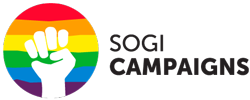This article first appeared in Marketing Interactive
Local insurer OneDegree recently stirred up chatter online with its new campaign video done together with dentsu Hong Kong which spotlighted LGBTQ+ couples. The campaign aimed to define the meaning of “home” and raise awareness about LGBTQ+ equality and inclusion in Hong Kong.
Statistics from CARMA between 14 May to 13 June showed that the video ad had drawn 11.7% positive, 86% neutral, and 2.3% negative sentiments generally. Most media outlets praised the ad and company for supporting LGBTQ rights. According to Charles Cheung, GM of CARMA, the term “homosexual” was one of the most mentioned words when someone talked about OneDegree in an article or post over the last 30 days.
A check by MARKETING-INTERACTIVE on the insurer’s Facebook also found that most comments were positive. However, some netizens also pointed out that Hong Kong is relatively behind other cities when it comes to recognising LGBTQ+ rights, but many were happy to see OneDegree being a pioneer in supporting the LGBTQ community, especially during pride month.
Meanwhile, the support in Hong Kong for LGBTQ+ rights has grown over the years. According to a survey conducted by the University of Hong Kong in 2018, 78% of Hongkongers said that same-sex couples should have at least some of the rights enjoyed by different-sex couples in 2017, compared with 73% in 2013. In addition, 69% of people in 2017 said that Hong Kong should have a law to protect against sexual orientation discrimination, compared with 58% in 2013.
While support for the LGBTQ+ community is always welcomed, there is a tendency for brands to commit what some might call rainbow-washing with their marketing campaigns, said industry players MARKETING-INTERACTIVE spoke to. David Ko, RFI Asia’s MD, told MARKETING-INTERACTIVE that simply putting a rainbow banner on social media, or changing a logo to allude to Pride Month, is no longer enough. What is needed is for brands to demonstrate a consistent commitment to engaging with LGBTQ+ consumers, taking extra care to ensure they are LGBTQ-friendly in all their campaigns throughout the year.
He explained:
“Marketing to LGBTQ+ consumers can be complicated because of the hyper-sensitive nature around authenticity, and not being being exploited.”
Ko added that being unequivocally on-message means taking the time to study the nuances of queer identity politics. Nonetheless, brands in Hong Kong still have a long way to go because Ko said the city has been “behind the curve when it comes to harnessing the LGBTQ+ audiences”. “Campaigns from OneDegree and HSBC have started to turn around perception but the trickle has yet to turn into a tide,” Ko said.
Aside from standing behind the LGBTQ+ community, brands should also be very clear of their brand value, objective, and direction before joining in the advocacy, Desmond Ku, founder and director of The Bridge Agency said. This is also in line with the authenticity factor that consumers are increasingly expecting from brands in their marketing.
Ku explained that as consumer psychology changes, the popularity of the brands depends on whether brands’ campaigns could resonate with their target audiences, “OneDegree’s video ad spoke about daily lives of LGBTQ couples, which Hongkongers could perfectly relate to themselves.” Ku believed the video ad inspires agencies that message delivered by the campaign has to be propelling, instead of just boosting sales.
Tips to creating LGBTQ+ campaigns
Brands must first and foremost recognise that LGBTQ+ politics is complex, and as such they need to invest in learning about the issues. “It would be wise to engage a DEI trainer to educate the entire marketing team and its agency partners,” RFI Asia’s Ko said. He added that companies must plan and deliberate whether the product should even target the LGBTQ+ segment. Otherwise, they run the risk of backlash. For example, Burger King was recently grilled in Austria for rainbow-washing as a result of its Pride Whopper which comes in two variations: two top buns and two bottom buns.

The QSR brand explained that the matching buns represent love and equal rights, adding that it stands for the equal rights of all identities and sexual orientations. However, some netizens questioned if the Pride Whopper had any actionable impact on the LGBTQ+ community.
Furthermore, RFI Asia’s Ko said key messages should be tested and iterated with the target audience, with a cross-section of representation. “Just targeting the stereotypical gay man in a design department is no longer enough. It needs to represent more voices. For example, while Drag queens and parades have been instrumental in the struggle for equal rights from the very first days of Stonewall, but they are not a complete representation of the LGBTQ communities, as many straight allies may assume,” he said. According to him, addressing the needs and wants of a diverse cross-section of people means a brand has devoted the time and commitment to learn about the community as a whole.
The Bridge Agency’s Ku also agreed that commitment to the community is important to show brands’ support. “Instead of just publishing a rainbow flag to assist product sales, brands can establish internal policies or donations to support the group by creating year-round campaigns,” he said.
Ku added that a successful campaign is not just about give and take, but a deep understanding of the mindsets of target audiences, “Will consumers accept the idea behind the campaign and rethink their connections with the brands and LGBTQ+ community? If the answer is yes, then consumers’ loyalty to a brand will increase,” he added.

